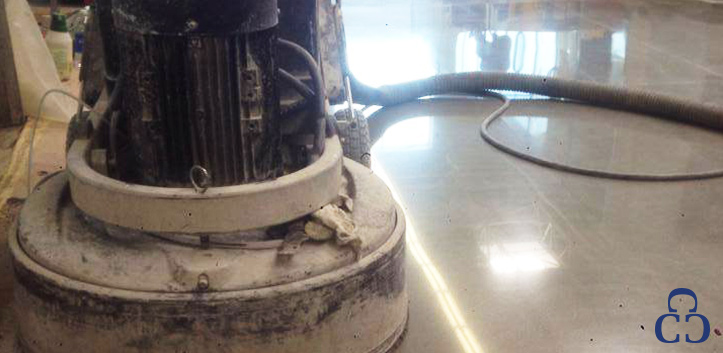
Concrete floors are renowned for their durability. Areas with high traffic or exposure to things like chemicals, heavy machinery, or constant moisture can all benefit from the stability of concrete.
But, like anything and everything else, concrete isn’t indestructible. Depending on the initial custom concrete coatings (or lack thereof), a concrete floor can show signs of wear-and-tear over time.
It’s crucial that any problems with your concrete surface are identified and isolated as quickly as possible.
Is it time to invest in surface repairs on your concrete?
Resurfacing
Cracking of either the surface coating or the substrate concrete can be hugely problematic. Not only does it weaken the concrete, but can also expose the inner surface to the harmful effects of moisture or contaminants. Any cracked surface should be ground and re-polished, or filled in and re-coated.
One of the most popular ways to resurface is through the use of a concrete overlay. If the integrity of your surface has been affected badly, this might be the best option.
A flowing polymer cement solution is pumped onto the damaged surface. Once given time to evenly distribute itself, the mixture is smoothed and spread manually. At least ¼ inch of solution is normally required to cover most imperfections.
Once dry, some types of overlays support protective custom concrete coatings that can be applied to seal and polish the new surface.
Recoating
Custom concrete coatings like epoxies or polymers can wear away over time if not properly installed in the first place. A concrete slab that wasn’t ground or levelled correctly can mean a drastically sped-up deterioration process in high-traffic spots.
The first step in preparing the floor for polishing is grinding away imperfections. Depending on the size of the floor, this can be done with a number of different grinders.
The more grinding required to level your floor, the pricier this process can become. Believe it or not, polishing can be more economical for larger areas – this is due to the fact that smaller and more compact equipment must be used on smaller floor areas that are less accessible to large crews and machinery.
Next, depending on the surface characteristics and expected workload, some floors may benefit from a hardening solution. These chemicals seep into the concrete and act as densifiers to make the existing concrete even stronger. They also make the surface less porous and even reduces the need for constant maintenance once the floor is finished.
The actual polishing process can be either wet or dry polishing. The main differences involve cleanup and mess-avoidance. Dry polishing creates dust, but the machines used for polishing can normally be coupled with a dust-containment system to minimize the dirt.
Wet polishing depends on water to keep the diamond surface cool as it polishes the concrete. Though this is easier on the polishing equipment, the dirty solution that it creates isn’t easy to clean up, especially in larger areas.
Both of these methods can be used depending on how much concrete is being removed, with contractors sometimes choosing to alternate between the two.
No matter which surface repair option you choose, resurfacing or polishing, your concrete will be stronger and look even better than before.
******
Custom Concrete Creations is chosen to help facilitate projects because we are the preferred custom concrete floor company, not only in Omaha, but for the greater Midwest region. No project is too big or too small for our team of seasoned experts who use state-of-the-art equipment on each and every project. We help you achieve the look of your dreams and do not consider the job done until you are happy with the results. So give us a call or contact us for your custom concrete needs today!
